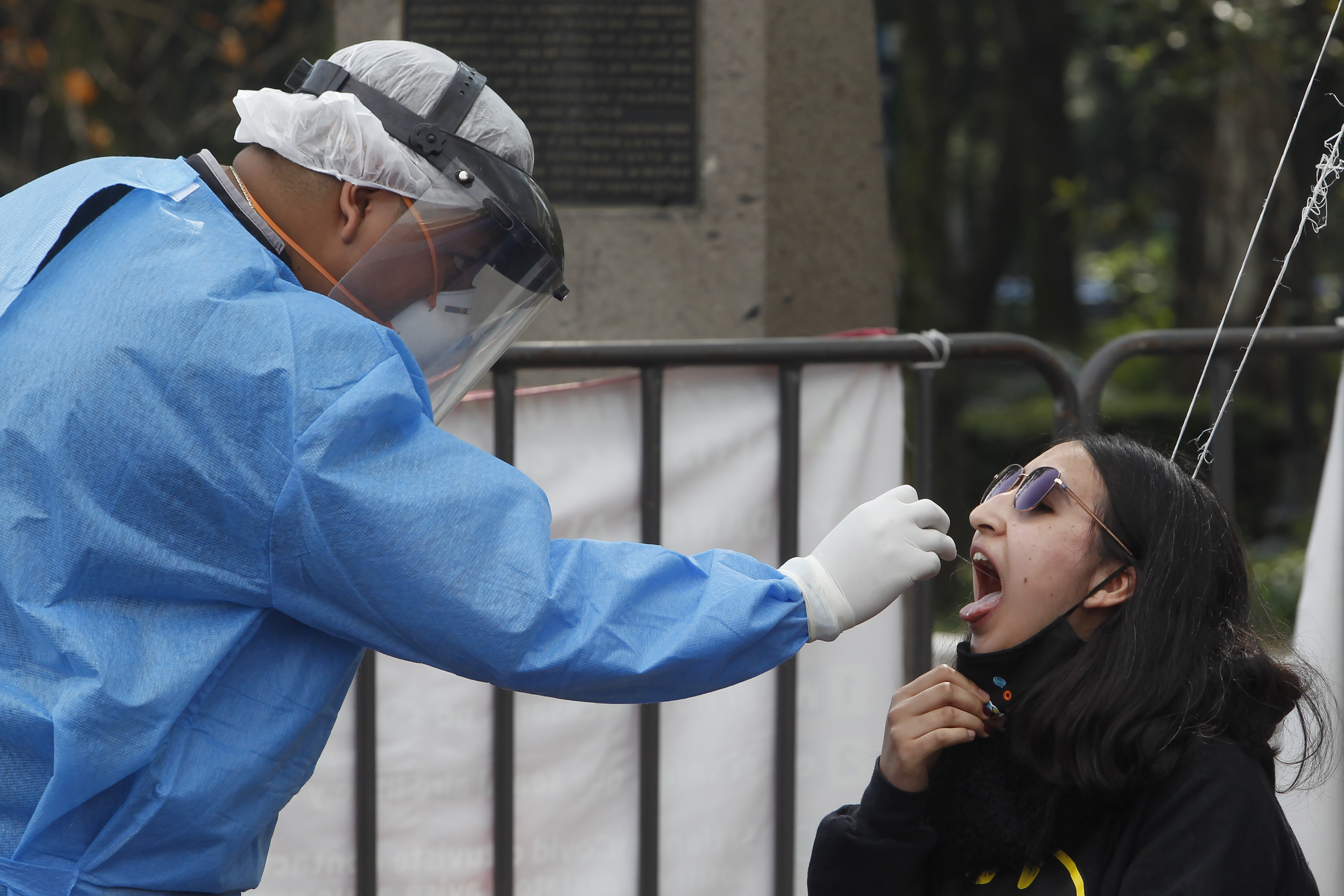
The coronavirus pandemic continues. It has already affected more than 494 million people and resulted in the death of more than 6.1 million. Since last December, the Ómicron variant of concern is the dominant one. Since the World Health Organization, attention has been drawn to the recombinations between the variants, which are the the result of the mixture of two variants or between sublinages of them. The surveillance of variants is key today because they could influence the spread of the pandemic.
The so-called recombinant XE is being closely followed, which is the mixture between the two Ómicron sublineages, BA.1 (which predominated between November and February in the world) and the so-called 'stealth' BA.2 (which was advancing over the last few months). Recombinant XE is already worrying health authorities.
According to the United Nations health agency, today there is a global predominance of the Ómicron variant of the coronavirus. It is based on the consideration of the 382,789 sequences uploaded to the GISAID platform with specimens collected in the last 30 days. 99.7% were samples from patients with the Omicron variant. Only 0.1% were Delta, and 649 sequences were not assigned to a Pango lineage (0.2%).
“Keep in mind that the global distribution of coronavirus variants of concern should be interpreted taking into account surveillance limitations, including differences in sequencing capabilities and sampling strategies between countries, as well as delays in reporting. In addition, some countries may have changed their analysis and sequencing policies,” WHO commented in its weekly newsletter.

Every week, experts carry out a risk assessment process for variants that are now also applied to recombinations. Since the epidemiological update published on March 22, 2022, there is no new evidence indicating that the recombinant variant assigned to the XD lineage, which is the recombination of Delta and Omicron, is associated with increased transmissibility or more severe outcomes.
Meanwhile, recombinant XE (which includes the sublineages of Ómicron BA.1 and BA.2) was first detected in the United Kingdom on 19 January. Since then, more than 600 sequences have been reported and confirmed.
Early estimates indicate an advantage in the community growth rate above 10% compared to BA.2. However, this finding requires further confirmation, they acknowledged.
Recombinant XE belongs to the Ómicron variant until significant differences in disease transmission and characteristics, including severity, can be reported. “WHO continues to closely monitor and assess the public health risk associated with recombinant variants, along with other variants of the SARS-CoV-2 coronavirus, and will provide updates as more evidence becomes available,” they reported.

However, experts in virology and genomics do not believe that recombinant XE is more severe or resistant to vaccines than other types of Omicron. Professor François Balloux, a geneticist at University College London, said the variant is likely to follow a path similar to that of the long-forgotten AY.4.2 Delta lineage, which aroused fears in Britain but failed to take off elsewhere. On his social networks, Professor Balloux said: “XE is not a worrying variant”.
Meanwhile, Dr. Angela Rasmussen, a virologist at the University of Saskatchewan, in Canada, said that “there is no reason to be nervous”. He noted that XE is one of the many recombinants of Ómicron BA.1 and BA.2. “As such, as much as it succeeds, it will still be a sublineage of Ómicron.” Delta had more than 200 sublinages of this type before being displaced by Ómicron.
Dr. Rasmussen also pointed out that “XE is not a Greek letter that designates a new variant of interest. It's just a recombination of Ómicron, the fifth identified, after XA, XB, XC and XD.” He advised that the same precautions should be taken for COVID-19 in general.
Professor Susan Hopkins, chief medical adviser at the British health agency UKHSA, stated: “Recombinant variants are not unusual, especially when there are several variants in circulation, and several have been identified during the course of the pandemic to date. As with other types of variants, most go extinct relatively quickly. This particular recombinant, XE, has shown a variable growth rate and we cannot yet confirm whether it has a real growth advantage.”

So far there is not enough evidence to draw conclusions about the transmissibility, severity or effectiveness of the vaccine, according to Hopkins. The British agency also reported that it will continue to monitor the situation closely on a routine basis, as will all data regarding coronavirus variants both in the UK and internationally.
Earlier this year, the Deltacron variant, a combination of Ómicron and the Delta variant that dominated the second half of 2021 in the world. Like recombinant XE, Deltacron had also been detected for the first time in the United Kingdom, and over time a very small number of cases were sequenced in America as well.
But Deltacron was overtaken by Ómicron — both BA.1 and BA.2 — and it didn't have much impact. Although recombinant XE has not yet been detected in the US, the increase in the “stealth” variant in recent weeks has proved to be of concern to some authorities. The Centers for Disease Control and Prevention (CDC) on Tuesday revealed that sublineage BA.2 — which is 30% more infectious than BA.1, but just as mild — now accounts for 72% of sequencing cases in the United States.
KEEP READING:
Últimas Noticias
Debanhi Escobar: they secured the motel where she was found lifeless in a cistern
Members of the Specialized Prosecutor's Office in Nuevo León secured the Nueva Castilla Motel as part of the investigations into the case

The oldest person in the world died at the age of 119
Kane Tanaka lived in Japan. She was born six months earlier than George Orwell, the same year that the Wright brothers first flew, and Marie Curie became the first woman to win a Nobel Prize

Macabre find in CDMX: they left a body bagged and tied in a taxi
The body was left in the back seats of the car. It was covered with black bags and tied with industrial tape
The eagles of America will face Manchester City in a duel of legends. Here are the details
The top Mexican football champion will play a match with Pep Guardiola's squad in the Lone Star Cup

Why is it good to bring dogs out to know the world when they are puppies
A so-called protection against the spread of diseases threatens the integral development of dogs




